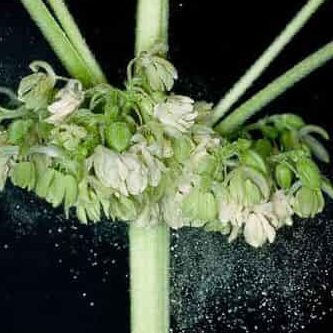Creating new cannabis strains is an exciting and innovative process that involves a combination of traditional breeding techniques and modern genetic engineering methods. Breeders have a vast array of tools at their disposal to create new strains with specific characteristics and traits, such as enhanced cannabinoid production or improved resistance to pests and diseases.

One of the main ways that new cannabis strains are created is through traditional breeding methods, which involve selecting plants with desirable traits and crossbreeding them to produce offspring with a combination of those traits. This can be done through self-pollination, cross-pollination, or selective breeding.
When it comes to breeding cannabis plants, self-pollination and cross-pollination are two important techniques that are often used. While both techniques involve the fertilization of a plant with pollen, they differ in some key ways.
Self Pollination
Self-pollination involves fertilizing a plant with its own pollen, while cross-pollination involves fertilizing a plant with pollen from another plant. One of the main advantages of self-pollination is that it allows breeders to more accurately predict the traits of the offspring, as the pollen comes from the same plant. This can be particularly useful for breeders who are trying to produce plants with specific traits.
However, self-pollination can also have some drawbacks. Because the offspring are produced from the same plant, they may be more genetically similar to each other and may be less adaptable to changing environmental conditions. This can make self-pollinated plants more susceptible to pests and diseases.
Cross Pollination
On the other hand, cross-pollination involves introducing new genetic material into the offspring, which can lead to a wider range of traits and greater adaptability to changing environmental conditions.
However, cross-pollination can be more difficult and less reliable than self-pollination, as it requires the presence of another plant and is more prone to failure due to environmental factors. It can also be more difficult to predict the traits of the offspring, as they will be the result of the combination of the traits of both parent plants.
In the end, the choice between self-pollination and cross-pollination will depend on the specific goals and needs of the breeder. Both techniques have their own advantages and disadvantages, and the best choice will depend on the desired outcome. So, it is important for breeders to carefully consider their options and choose the technique that best meets their needs.
Modern Breeding Methods
In addition to traditional breeding methods, breeders can also use modern genetic engineering techniques to create new cannabis strains. These techniques include gene editing, which involves making precise changes to the DNA of a plant, and genetic modification, which involves introducing new genetic material into a plant.
While these techniques offer breeders a wide range of possibilities for creating new cannabis strains, they also raise ethical and safety concerns. As a result, their use is regulated by various government agencies.
Conclusion
Overall, the creation of new cannabis strains is an exciting and dynamic process that involves both traditional breeding techniques and modern genetic engineering methods. By carefully selecting and crossbreeding plants with desirable traits, breeders can create new strains with a wide range of characteristics, from enhanced cannabinoid production to improved resistance to pests and diseases.
You can find more info here – https://www.leafly.com/news/cannabis-101/how-are-new-weed-strains-created
Best Medium For Growing Cannabis

